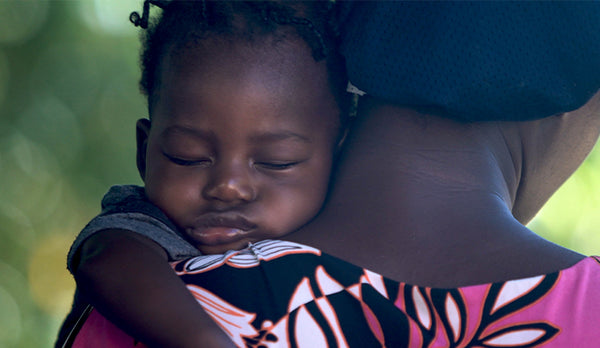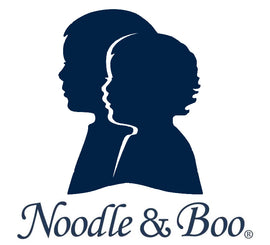
Resources: Kids Health, Health Partners and Variations Psychology
Bonding with your newborn may not always be immediate. Whether you've had a tough pregnancy or delivery, are experiencing postpartum depression or simply are not feeling the closeness and attachment you were expecting to feel, bonding can be a challenge.
If you don't instantly have that strong attachment to your child after birth, that's ok! Bonding with your baby is something that happens naturally over time, through attentive care. After birth, bonding activities look the same for both mom and dad.
Skin to Skin
One of the best ways to bond with baby is skin to skin contact! Letting your child lay on your bare chest is beneficial for both of you in a number of ways. This is going to help baby regulate their temperature and heartbeat, reduce their stress and the amount that they cry and generally make them feel safer.
For you, skin to skin time will release a chemical in your body called oxytocin, something that increases feelings of calm, happiness and closeness. If your child is in intensive care or at a hospital, ask hospital staff to help you touch and hold your baby safely!
Human touch is so important, and is something that helps us create an attachment to others no matter our age. Finding ways throughout the day to hold hands, rock, kiss, massage, and initiate touch with one another will help you and baby form a close attachment quickly. Carrying them in a sling or front carrier as you go about your day is a great way to keep them close!

Eye Contact
Make lots of eye contact! This may seem obvious, but it's super important for early development. "Studies have shown that regular eye contact can help babies develop stronger language skills by the time they’re 2 years old. Also, babies can recognize their parents’ faces as young as 4 days old. By making eye contact with your baby during feeding times, cuddle sessions and throughout the day, you’re helping your child memorize your face and learn to trust you. To help your baby get a good look at you, hold them between 8 and 15 inches away from your face while looking into their eyes." Health Partners
Share Your Voice
Talking to your baby strengthens language development as they start to recognize your voice and pick up on speech patterns and tone. They don't need to understand what you're saying to listen and engage. Chat with them about your day, what's going on in your surrounding environment, whatever you want! As they grow you'll find that they love to make noises and coo back at you as you speak. They are trying to connect!
Reading together and singing songs and lullabies are more good ways to share your voice. "Research has shown that a mother’s singing can reduce her baby’s stress, increase healthy weight gain, and even shorten NICU stays for babies who require hospitalization.
Make it a routine to sing to your baby as you rock them to sleep after bath. Over time, your daily ritual will be something your baby looks forward to and will build sweet memories for both of you." Variations Psychology

Move Together
Bonding through movement has been shown to make parents feel more comfortable and self-assured in holding their precious new infant, and is something any parent can take part in. "Those of us who do not have the luxury of participating in baby-centric exercise like mommy-and-me-yoga, can still find plenty of ways to bond." Variations Psychology
Push baby's legs in a bicycle motion during diaper change or whenever they are on their back. Praise them as they learn to bounce on your lap and solid surfaces. During tummy time, lay on your stomach with them, face to face. This should prompt them to lift their head to look at you, making eye contact and strengthening neck and core muscles!
As your child's neck and head muscles grow stronger, hold their forearms and gently pull them up and down. Doing 'baby sit ups' teaches them that they are strong and can move their body in ways they haven't before! Rewarding them with a smile, a kiss, a coo every time they come up can make the game fun.
Time to Eat
Mealtime is a great opportunity for bonding that both mom and dad can get in on. Whether breastfeeding or feeding by bottle, your confidence grows with every meal as you watch your baby become bigger and stronger. You put those chunky rolls there, you gave them the strength to grab and play and coo!
You are an awesome parent and are teaching your little one that they can trust you to care for them and are responsive to their needs and cues.
Good luck!
Sometimes bonding can be a challenge. Be patient with yourself, as you and baby learn together how to maneuver this new normal and take care of one another. Trust that your attachment will come in time. If you continue to struggle, reach out for help! No one can do this alone and a good way to gain support is by talking to your doctor or finding a support group that best suits your needs.
DISCLAIMER: Content on this site is not a substitute for professional medical or healthcare advice, diagnosis, treatment, dietary, or safety advice, and may not be used for such purposes. Always seek the advice of your physician or other qualified expert with any questions you may have regarding a medical question, condition, or safety concern. Reliance on information presented on this site is at your own risk. This site contains the opinions and views of others and does not represent the opinions and views of Noodle & Boo, LLC. Given the interactive nature of this site, we cannot endorse, guarantee, or be responsible for the accuracy or efficacy of any content generated by our users or bloggers.










Leave a comment